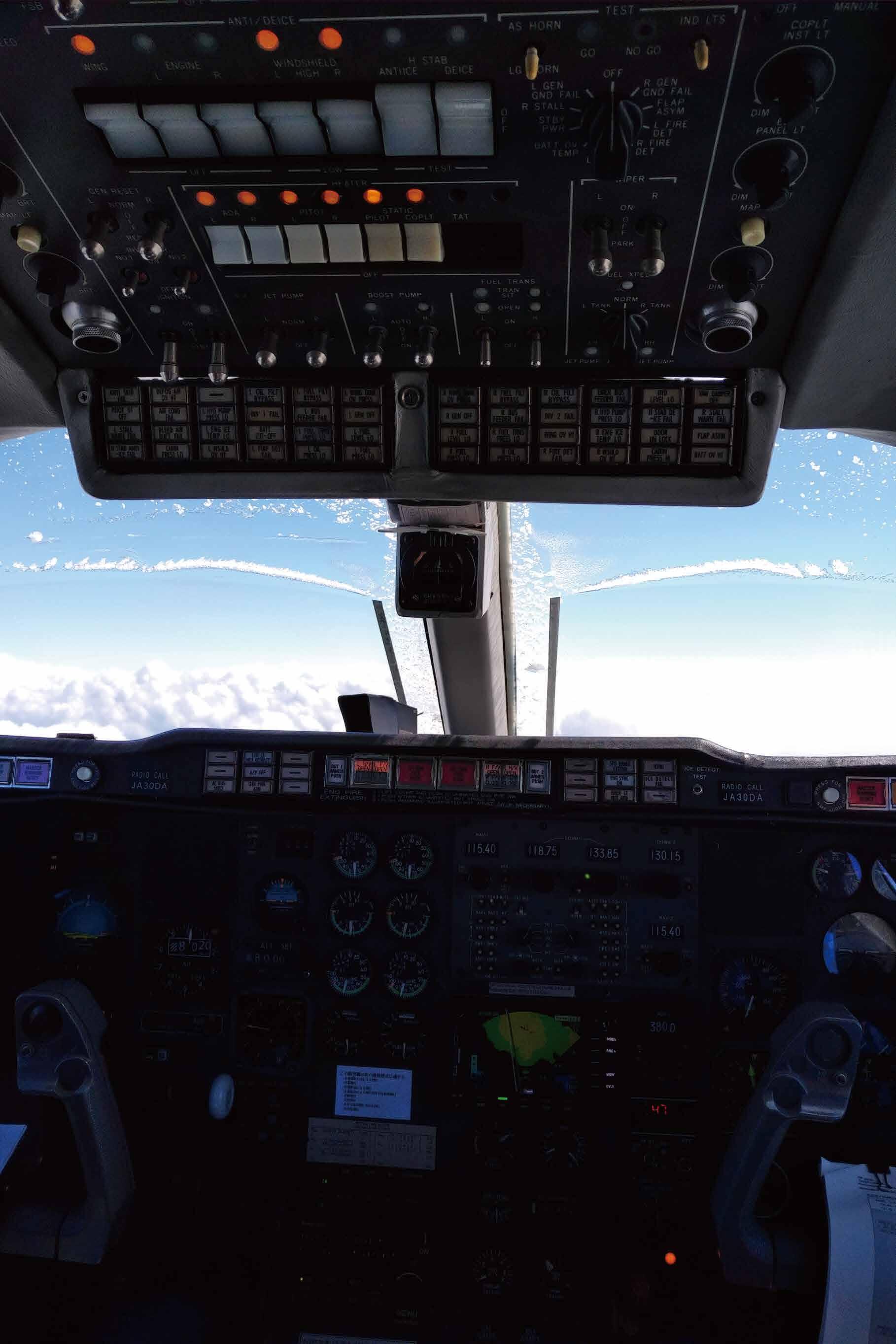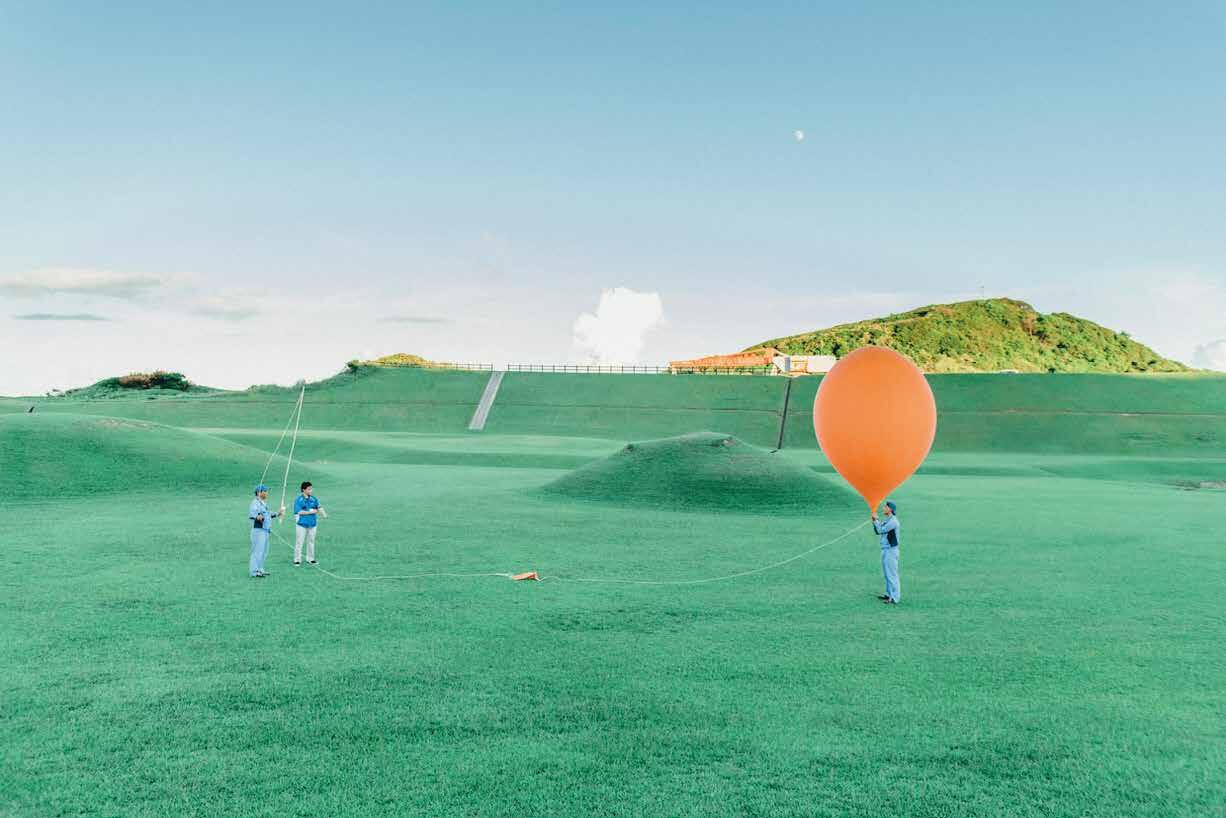Space Transportation Technology Directorate
Behind the Scenes
Observing Weather Conditions,
Which Largely Affect a Rocket Launch
It largely depends on weather conditions whether or not a rocket can be launched. About the observation and forecast of weather conditions before a rocket launch, OOWADA Youichi and NAGAO Naoki, Range Technology Development Unit of the Kagoshima Space Center, speak as follows:
"Based on the numerical weather prediction model available from the Japan Meteorological Agency and also in consideration of the conditions specific to Tanegashima and Uchinoura, where we have space launch facilities, we predict weather conditions, including lightning, wind and rain as well as the wind direction and velocity up in the sky. We also predict the existence/non-existence of a freezing layer containing both fog and ice crystals and the thickness of the layer if it is predicted to exist, because if a rocket penetrates through a cloud that contains the layer, it could cause lightning. We decide whether or not to launch a rocket based on the forecast data."
The weather observation to obtain such data begins four days before the scheduled launch day and the staff engage in the work in 24-hour shifts. "We start doing dangerous operations for the launch, including supplying propellant to the reaction control system (RCS), for which we need to predict and monitor sudden lightning, rain and wind around the clock and dispatch necessary information to suspend the operations and review the schedule when the aggravation of weather conditions is predicted."
Weather conditions are constantly checked by observation equipment on the earth, and on the day of the launch, high-altitude balloons (for observation up to an altitude of about 20 km) and weather radars are also used for measurement. As for the weather conditions that have the greatest impact on the launch of a rocket, OOWADA says as follows: "Although all the conditions, including rain and wind, have impacts on it, I would say it is the freezing layer because it is particularly difficult to predict the existence or observe the layer." In the past, the thickness of the layer was used as a criterion to judge the safety of the launch, which, however, tended to result in the cancellation of the launch due to excessive consideration for safety. In response, JAXA established a method to evaluate the risk of lightning caused by the layer by using weather radars and not simply based on the thickness of the layer. NAGAO continues as follows: "We used to limit the use of this method to launches at the Tanegashima Space Center in winter, but as a result of continuing research into the method, we were able to apply the method also at the Uchinoura Space Center in the winter of 2021. We are making examinations to further expand the scope of application."
Going forward, the Directorate will continue to conduct research and enhance measures to provide latest and accurate weather information for rocket maintenance, improvement and successful launch and also to increase the launch frequency for H3 and Epsilon S Launch Vehicles.
Profile

|
|
|---|

|
|
|---|
All the images are copyrighted ©JAXA unless otherwise noticed.
- Home>
- Global Activity>
- Public Relations>
- JAXA’s>
- JAXA's No.87>
- Observing Weather Conditions, Which Largely Affect a Rocket Launch

